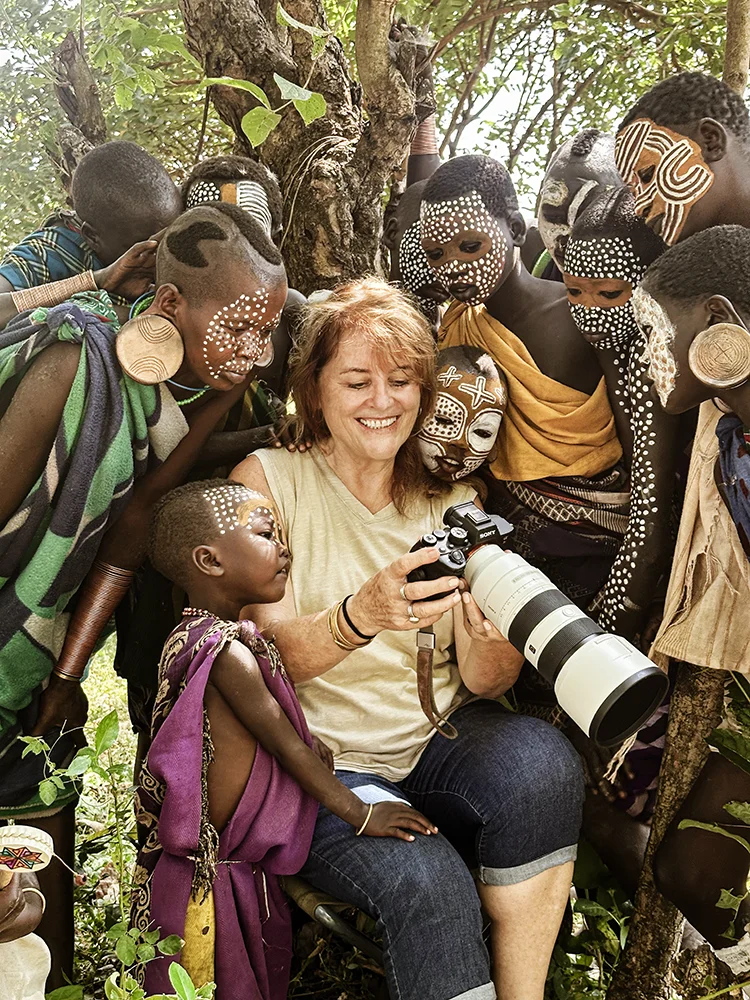I am a photographer deeply drawn to the authenticity of human connection and the beauty of cultural resilience. My work is rooted in natural light—I never use flash or artificial setups, as I believe less gear creates a more comfortable and organic experience for my subjects. This allows me to connect with them deeper, capturing their essence without intrusion.
Occasionally, when I have the time, I incorporate a black backdrop—particularly when camping—creating an intimate space to balance both environmental and portraiture elements. However, my process always begins the day before a shoot. I explore the area, searching for the best natural light (“chasing the light”) and ensuring the background complements the subject without distractions. Just as important is observing and connecting with the people, and understanding who is comfortable with my presence behind the lens.
My photography is defined by its relaxed, immersive style—capturing joy, beauty, and quiet moments of connection in a subject’s natural environment. Whether it’s the strength of Ethiopian tribes or the spiritual devotion in Bali, I strive to document cultural narratives with honesty and warmth.
I shoot primarily in Africa, particularly Ethiopia, but Bali is home. My husband is Balinese, and my connection to the island runs deep, especially in the villages where tradition, Hindu rituals, and daily resilience are ever-present. When I’m not travelling, I work from my Photography Gallery & Coffee House in Bali, where my small, dedicated team understands and shares my passion for storytelling through images.
For years, I exclusively used Canon gear, but three years ago, I transitioned to Sony Alpha R5 (two bodies), paired with my go-to lenses:
• Sony G Master 24-70mm
• Sony G Master 70-200mm
• Sony 50mm Prime
• Sony 16-35mm
However, I only carry what is necessary for each shoot, ensuring I remain as mobile and unobtrusive as possible.
The two series I have submitted—Ethiopia and Bali—reflect my deep appreciation for culture, beauty, and resilience. Whether in the remote Omo Valley or the heart of Bali’s spiritual traditions, my focus remains the same: to honour the people I photograph and to share their stories with the world.
About the Myanmar Collection
"Myanmar is one of my favourite places on Earth—it feels like time has stood still. The ancient pagodas, temples, and deep history make it so special, but Bagan is truly breathtaking. The monasteries, the monks, and their quiet way of life have always drawn me in. There’s something about the early morning light, the sound of chanting, and the simplicity of daily rituals that feels unchanged for centuries. Through my photographs, I want to capture that feeling—the beauty, the stillness, and the deep sense of tradition that makes Myanmar so unique."
Awarded Photographer of the Week - Week 09